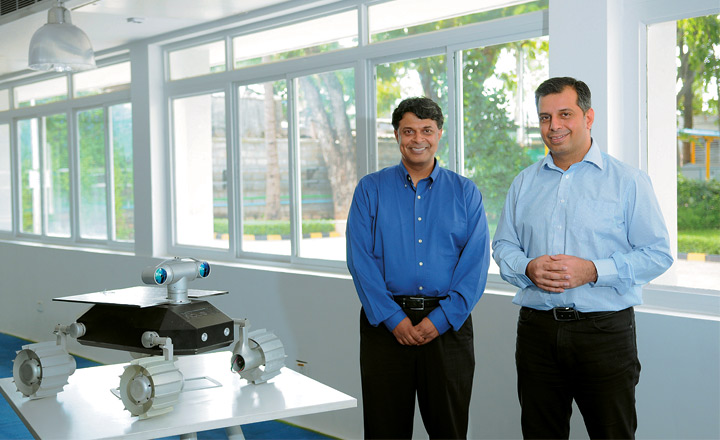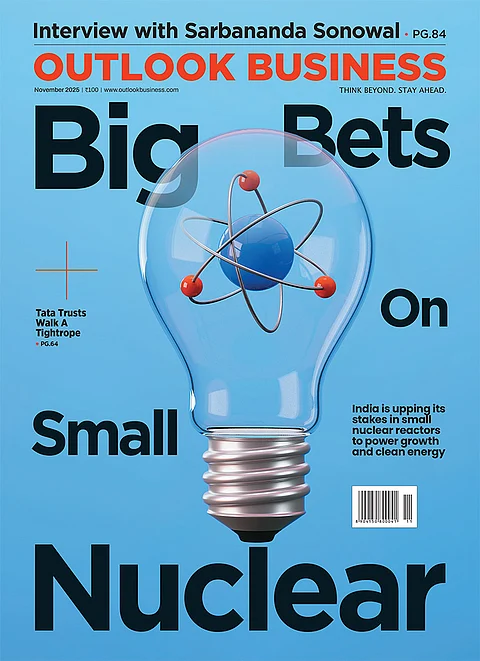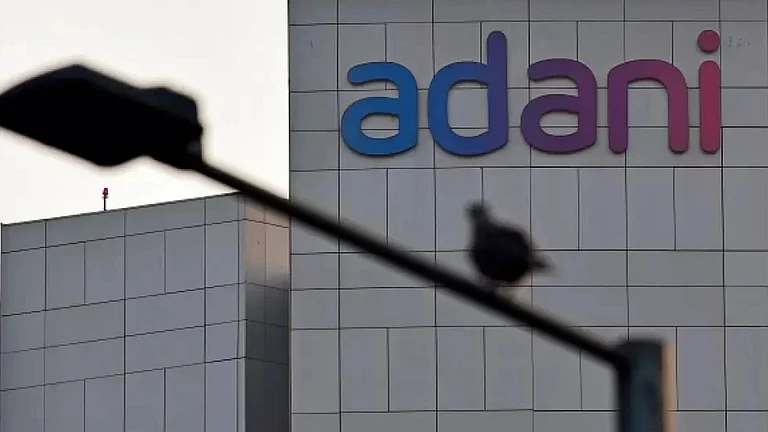Housed at their Aryabhatta Block office in Bangalore, Team Indus is hard at work to win Google’s daunting target — to land a rover on our nearest neighbour in space. If it does, as a contender in the $20-million Google Lunar XPrize (GLXP), it will be the first privately-funded organisation in the world to do so. So far, only three countries have managed this feat — The US during the Apollo Missions in the late 1960s, the Soviets in the 1970s, and China recently in 2013. Of course, the Indian Space Research Organisation (Isro) has the Chandrayaan II mission scheduled for December 2017 or early 2018. The former is the deadline for Team Indus too.
Number game
The ‘geeky’ youngsters, spurred by Star Wars, are sure headed beyond the boundaries of Earth, but can they herald a new era for space tech in the country? The investors sure do seem to think so. Sharad Sharma, co-founder, iSPIRT, an early investor in Team Indus says, “For me, it’s an emotional bet. I love the spunkiness of the idea. And it marks a confluence of combinatorial innovation and missionary entrepreneurship (as opposed to mercenary entrepreneurship).”
Like other investors, Sharma is also motivated by the idea of national pride. Ashish Gupta, investor in Team Indus and co-founder, Helion Venture Partners, says that if the team wins the competition, it will be a huge inspiration for a whole new generation of youngsters that it is possible to solve “hard problems” in India.
Team Indus is funded by over a dozen HNIs — first generation entrepreneurs, who have created companies out of India, says co-founder Dilip Chabria. Some of the investors include Nandan Nilekani, Pallaw Sharma, director of analytics at Microsoft, Subrata Mitra and Shekhar Kirani of Accel Partners, among others.
That’s just as well as GLXP limits state investment to 10% i.e. contestants have to be more than 90% privately funded. That’s because most space technology is jealously guarded by various government organisations as of now. And Google’s Lunar XPrize aims to encourage private investment in space technology and development of low-cost systems for space exploration.
While Chabria doesn’t reveal funding details, news reports indicate the company has raised around $2 million so far. When it comes to the segment, “Investors need to have a long-term view, it’s not like traditional VC funding so it’s somewhat challenging but we remain confident of achieving the goals,” says Vivek Raghavan, chief product manager, UIDAI, who is also an investor in Team Indus.
Considering that the launch cost is estimated to be around $60 million, including $20-25 million to book a PSLV launch slot, Team Indus has a long way to go. But private companies are supporting them in a big way. Larsen & Toubro, which has previously worked with Isro, is helping them with the design and fabrication of the lander. Sasken Communication Technologies has lent them office space, while Tata Communications is helping them with its communication technology. “Tata Communication’s long-range communication expertise and low latency connectivity between ground tracking stations is not only mission-critical but a huge contributor to the future of space exploration,” says Rahul Narayan, team leader. The company has also received significant advice and
guidance from senior scientists at Isro, many of them old hands, who have been with the space research organisation since the Aryabhatta satellite launch in the 1970s. “Team Indus’ birth took place because there was an Isro,” says Chabria.
Reaching for the moon
Maybe, that’s why it chose to tap the moon too, with LunarX. The basics of the competition are these: To land a craft on the moon, have the rover transverse 500 metres on the surface and send back high quality photos and videos as evidence. The first team to successfully achieve this will be awarded $20 million, and the second $5 million.
Originally, there were 39 teams, but this has come down to 16. Going by Google’s Milestone Prizes, which tested the teams’ hardware and software capabilities, there are 4-5 serious contenders. Team Indus is in the top three, having won the $1 million Milestone Prize for landing systems. The competition is stiff though. Astrobotic Technology, an American company, won across categories: landing, mobility (which demonstrates ability to navigate the rover on the moon’s surface) and imaging, netting prize money of $1.75 million.
As long as teams achieve their objective, it doesn’t matter how it’s achieved. Chabria quips, “If Fred Flintstone were to use a slingshot to land on the moon, he still wouldn’t be disqualified.” But jokes apart, landing an object on the moon is no mean feat. “Landing a spacecraft is more complicated than putting something into orbit. First level is when you put something into the earth’s orbit, second is when you launch into the orbit of the moon or Mars, the third is to soft land on the surface,” says Raghavan.
It will take 20 days for the 600 kg spacecraft to complete its journey from the earth to the moon. Team Indus will be using ISRO’s Polar Satellite Launch Vehicle (PSLV) to launch the spacecraft. When the craft begins its descent from the moon’s orbit, it will be travelling at a supersonic speed of 1.69 km/s, and when it’s about to land 1,000 seconds later, it has to slow down to a velocity of 1 m/s in both the horizontal and vertical plane.
That’s tricky as the craft is completely autonomous, meaning the launch team can’t control or provide instructions to the craft, mainly because of the 1.8-second time lag due to the distance between the earth and the moon. While this is challenging in itself, it is made more complicated by the fact that the moon doesn’t have any atmosphere to offer resistance to the incoming spacecraft. Thus, the velocity has to be managed entirely using thrusters, which are propulsive devices typically used in spacecraft for altitude control. There’s also the constantly changing mass of the craft — the spacecraft loses half its mass during descent, from 400 kgs to 200 kgs — to contend with.
 To achieve all this autonomously, the spacecraft is fitted with plenty of sensors — altimeters, cameras, and so on. The fundamental device for navigation is the inertial measurement unit (IMU), which measures the craft’s position and movement. Besides, a whole bunch of algorithms perform millions of computations every few seconds, using the data from the hardware to figure out where the craft is and where it should land. While the broad territory of the craft’s landing spot is pre-decided — the Mare Imbrium, a large, relatively smooth crater on the moon. Existing maps aren’t completely accurate, thanks to extraterrestrial bodies that strike and deform the surface of the moon. The craft will thus compare the images captured with existing maps on board to understand its position and decide a landing spot. “Based on these inputs, we will keep modifying the engine thrust every 64 milliseconds,” says Raghavan.
To achieve all this autonomously, the spacecraft is fitted with plenty of sensors — altimeters, cameras, and so on. The fundamental device for navigation is the inertial measurement unit (IMU), which measures the craft’s position and movement. Besides, a whole bunch of algorithms perform millions of computations every few seconds, using the data from the hardware to figure out where the craft is and where it should land. While the broad territory of the craft’s landing spot is pre-decided — the Mare Imbrium, a large, relatively smooth crater on the moon. Existing maps aren’t completely accurate, thanks to extraterrestrial bodies that strike and deform the surface of the moon. The craft will thus compare the images captured with existing maps on board to understand its position and decide a landing spot. “Based on these inputs, we will keep modifying the engine thrust every 64 milliseconds,” says Raghavan.
There are also numerous sub-systems that have to work in synchronisation to realise the mission. Some of the sub-systems include: structures, propulsion to guide the spacecraft to its designated spot, avionics that deals with the electronics on board, communication systems, thermal systems, power systems and finally, the software that drives the navigation algorithm. “The thermal sub-system is particularly interesting because when you’re in space, there is huge variation in temperature across the 6-feet body of the spacecraft. The side, which is facing the sun, might be at +100 degrees while the opposite side might be at -150 degrees. The thermal system helps us manage that kind of thermal environment,” says Raghavan.
Chabria says the interdisciplinary nature of the mission has ensured that all conventional departments of engineering are represented at Team Indus, with the exception of chemical engineering. While the company is sourcing components from both local and global suppliers, the kind of complex systems engineering required to smoothly execute a project of this size is unprecedented in India.
The spacecraft will carry a 30 kg payload (equipment carried by a spacecraft), including a 250-gram project payload . The team has launched “Lab 2 Moon” contest for students aged 14-25 years to suggest the project payload, which will mostly be experiments to be performed in a lunar environment. Most of these experiments will revolve around sustainable living on the moon, according to Sheelika Ravishankar, people lead, Team Indus.
Just in time
Back on earth though, the experiment started in 2010. At that time, Chabria says, they were looking for interesting technology challenges to execute. “We happened to see an ad of GLXP in 2010, got excited about it and thought we could help with the robotics or AI part. We were sure there was an Indian team doing it. But much to our surprise, there was no Indian team. It was late by then, we were not left with too much time but managed to get our foot in the door on the last date: December 31, 2010,” says Chabria. The company, itself, was registered in May 2011.
There were numerous moving parts the company had to look at but the most critical one was manpower. More importantly, they needed mentors since none of them hailed from a space background. “We needed people to help us understand what the unknowns were for the mission, because you can’t tackle the problem if you don’t know what it is. We spent about a year or so to get the right people to guide us,” says Chabria. They managed to rope in retired Isro scientists, who have lent their invaluable space expertise to the company. In 2013, they shifted base from Delhi to Bangalore to access the city’s ecosystem of space component suppliers nurtured by Isro and also get closer to the organisation’s base itself.
Initially, it was a challenge to recruit talent because of credibility issues. But winning the Milestone Prize last year and the presence of several Isro scientists has helped. “There is now a kind of buzz in select engineering schools about Team Indus. We have a unique combination of people here: there are around 15 retired Isro scientists, who are here to provide expertise. On the other side, there are kids for most of whom it’s the first job outside of college. These are the kind of kids who really want to do engineering. If you’re excited about building things, the fact that we offer the opportunity to be involved in a real mission makes us the employer of choice for these kids,” says Raghavan. The tagline of the company is also aimed at motivating people to build new things: Aspire, Believe, Create, which Chabria calls the “ABC of engineering”.
Ravishankar says that the challenge is to match senior Isro scientists with the young lot straight out of college. “We’ve managed to get both of these groups to work well. As an organisation, we are very flat. There is a small element of hierarchy because decision making is based on this, but you will often see old grey-haired men arguing their point with a bunch of youngsters who’re arguing back. That kind of learning is what’s gotten us so far,” she says.
To infinity and beyond?
The organisation today has 90 employees, with around 85 of them being technical staff. “Our long-term vision is to become a deep-tech aerospace company which solves system level problems. GLXP is the first marquee manifestation of the kinds of problems we’d like to solve,” Raghavan says.
The very first opportunity lies in building satellites in a cost-efficient manner. “Our spacecraft is essentially a satellite that also has the capacity to land on the moon. It’s an orbiting satellite, which also knows how to land, so we have all subsystems present. That is one potential area where we have some innovative ideas,” he says.
The cost of a single satellite launch varies from $50 million to $500 million depending on size and functionality as of now. “Our focus is on building satellites faster, cheaper, better — faster delivery, less cost and better efficiencies. Right now we’re focusing on small satellites in the range of 100-150 kg, that’ll be cheaper by around 30-50% than existing satellites in the category,” adds Chabria. The reason they can do it at a cheaper cost, Chabria says, is because they’re developing many of the sub-systems themselves.
Coming to the present, the fact that Team Indus will be spending $60 million to reap a reward of $20 million might seem unsound, but then it is a “new kind of animal”, as Chabria puts it. Their primary focus is winning the competition, probably inspired by Yoda’s philosophy of “do or do not, there is no try.” There is no set plan for the company’s path if it wins or loses, though the company has developed many side technologies in the course of building the spacecraft, which may have commercial applications. They are, however, tight-lipped about the details.
iSPIRT’s Sharma says, “In times of non-linear change, when things are changing so rapidly the traditional way of forecasting the future doesn’t work. You have to shape the future. Team Indus has an opportunity to shape the private space industry. There is no preordained future. At this point, I’m comfortable not knowing how the next two-three years will unfold for them.” Nevertheless, a report suggests Team Indus can tap market opportunities in payload hosting, subsystems, lander systems, spacecraft and hardware, and other areas, which in itself is a multi-billion dollar market.
That’s partly what got Bala Parthasarathy, investor, Team Indus, excited in the first place. “My motivation for investing was part patriotism, part investment because of the potentially outsized returns. If India becomes a player in aerospace, Team Indus is the only company that can possibly succeed,” he says.
Clearly, this is a long-term play. Investors seem to think that over time, space will no longer remain the preserve of government organisations and increasingly move into the private domain, an idea that is gradually gaining currency and turning into reality with the likes of SpaceX and Virgin Galactic. In India, Team Indus is leading the transformation. May the Force be with it! .











